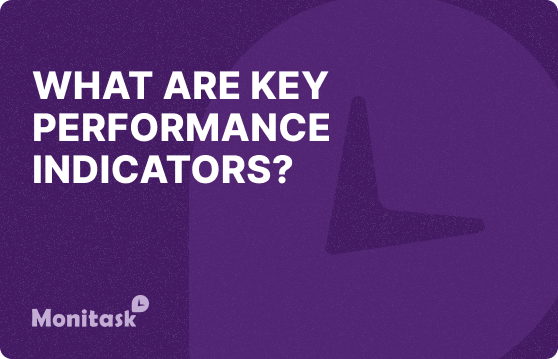What Are Key Performance Indicators?

Key Performance Indicators (KPIs) are quantifiable metrics used to evaluate an organization’s success in achieving specific objectives. They help businesses track progress, make data-driven decisions, and align efforts across departments. Effective KPIs are SMART: Specific, Measurable, Achievable, Relevant, and Time-bound.
In the ever-evolving landscape of human resources and business management, Key Performance Indicators (KPIs) have become an indispensable tool for measuring and driving organizational success. This comprehensive guide will delve into the intricacies of KPIs, their implementation, and their impact on modern businesses.
Understanding Key Performance Indicators
Key Performance Indicators, commonly referred to as KPIs, are quantifiable measurements used to gauge an organization’s performance over time. These metrics are carefully selected to reflect the most critical aspects of a business’s operations, aligning closely with its strategic goals and objectives.
KPIs serve as a navigational tool, helping businesses chart their course through the complex waters of modern commerce. They provide insights into various facets of an organization, from financial health to customer satisfaction, operational efficiency, and employee engagement.
KPIs are the pulse of a business, providing real-time insights into its health and performance.
The SMART Criteria for Effective KPIs
To ensure that KPIs are truly effective, they should adhere to the SMART criteria:
| S | Specific | Clearly defined and focused on a particular aspect of performance |
| M | Measurable | Quantifiable and comparable over time |
| A | Achievable | Realistic and attainable given the resources available |
| R | Relevant | Aligned with the organization’s goals and objectives |
| T | Time-bound | Measured within a specific timeframe |
Types of Key Performance Indicators
KPIs can be broadly categorized into several types, each serving a unique purpose in the organizational context:
1. Financial KPIs
Financial KPIs are crucial for assessing a company’s fiscal health and performance. They provide insights into profitability, liquidity, and overall financial stability. Some common financial KPIs include:
- Revenue Growth Rate
- Net Profit Margin
- Return on Investment (ROI)
- Debt-to-Equity Ratio
- Cash Flow
For instance, a company might set a KPI to increase its revenue growth rate by 15% year-over-year. In 2023, if the company’s revenue was £100 million (approximately $127 million USD), the target for 2024 would be £115 million ($146 million USD).
2. Customer KPIs
Customer-focused KPIs help organizations understand their relationship with their client base and the effectiveness of their customer service efforts. Examples include:
- Customer Satisfaction Score (CSAT)
- Net Promoter Score (NPS)
- Customer Retention Rate
- Customer Lifetime Value (CLV)
According to a recent study by the Customer Experience Professionals Association (CXPA), companies with a high NPS outperform their competitors by an average of 22% in terms of revenue growth. This underscores the importance of customer-centric KPIs in driving business success.
3. Operational KPIs
Operational KPIs focus on the efficiency and effectiveness of an organization’s internal processes. These might include:
- On-Time Delivery Rate
- Defect Rate
- Inventory Turnover
- Cycle Time
For example, a manufacturing company might set a KPI to reduce its defect rate from 2% to 1.5% within six months. This seemingly small improvement could result in significant cost savings and increased customer satisfaction.
4. Human Resource KPIs
HR KPIs are essential for measuring the effectiveness of human resource management and employee performance. Some key HR KPIs include:
- Employee Turnover Rate
- Time to Fill (for new positions)
- Training ROI
- Employee Engagement Score
According to the Society for Human Resource Management (SHRM), organizations with high employee engagement scores experience 21% higher profitability. This statistic highlights the importance of tracking and improving HR-related KPIs.
Implementing KPIs in Your Organization
Implementing KPIs effectively requires a strategic approach. Here’s a step-by-step guide to help organizations get started:
- Identify Your Organizational Goals: Begin by clearly defining what your organization aims to achieve in the short and long term.
- Choose Relevant KPIs: Select KPIs that align with your goals and provide meaningful insights into your progress.
- Set Realistic Targets: Establish achievable targets for each KPI, considering historical data and industry benchmarks.
- Implement Tracking Systems: Utilize appropriate tools and software to consistently measure and monitor your chosen KPIs.
- Analyze and Act on Results: Regularly review your KPI data and use the insights to inform decision-making and drive improvements.
- Review and Refine: Periodically reassess your KPIs to ensure they remain relevant and effective as your organization evolves.
Remember: The key to successful KPI implementation is not just in the selection of metrics, but in how they are used to drive action and improvement within the organization.
Common Pitfalls in KPI Implementation
While KPIs can be powerful tools for organizational improvement, there are several common pitfalls to avoid:
- Overcomplicating KPIs: Choosing too many or overly complex KPIs can lead to confusion and inaction.
- Misalignment with Goals: Selecting KPIs that don’t directly relate to organizational objectives can result in misdirected efforts.
- Lack of Context: Failing to consider external factors or industry benchmarks when interpreting KPI data can lead to flawed conclusions.
- Ignoring Leading Indicators: Focusing solely on lagging indicators (outcomes) while neglecting leading indicators (predictive measures) can limit proactive decision-making.
- Infrequent Review: Not regularly assessing and adjusting KPIs can result in outdated or irrelevant metrics.
The Future of KPIs in the Digital Age
As we move further into the digital age, the landscape of KPIs is evolving rapidly. Advanced technologies are reshaping how organizations measure and interpret performance data:
Artificial Intelligence and Machine Learning
AI and ML algorithms are increasingly being used to analyze vast amounts of data and identify patterns that humans might miss. This allows for more nuanced and predictive KPIs. For instance, AI-powered systems can predict customer churn rates with remarkable accuracy, allowing businesses to take proactive measures.
Real-Time Analytics
The advent of real-time analytics platforms means that KPIs can now be monitored and acted upon instantaneously. This is particularly crucial in fast-paced industries where quick decision-making can make or break a business.
Integration of Non-Traditional Data Sources
Organizations are increasingly incorporating data from non-traditional sources into their KPIs. Social media sentiment analysis, for example, is becoming a key metric for many businesses to gauge brand perception and customer satisfaction.
Conclusion
Key Performance Indicators are more than just numbers on a dashboard; they’re the compass that guides organizations towards their strategic goals. When properly implemented, KPIs provide invaluable insights that drive informed decision-making, improve operational efficiency, and ultimately lead to better business outcomes.
As we navigate the complexities of the modern business landscape, the role of KPIs will only grow in importance. Organizations that master the art and science of performance measurement will be well-positioned to thrive in an increasingly competitive global marketplace.
Remember, the journey of KPI implementation is ongoing. It requires continuous refinement, adaptation, and a commitment to data-driven decision-making. By embracing this approach, organizations can unlock new levels of performance and achieve sustainable success in the long term.
Key Takeaway: Effective KPI implementation is not about tracking every possible metric, but about focusing on the vital few that truly drive your organization’s success. It’s about quality over quantity, insight over information, and action over analysis.
As we look to the future, it’s clear that KPIs will continue to evolve, incorporating new technologies and methodologies. Organizations that stay ahead of these trends and adapt their KPI strategies accordingly will be best positioned to succeed in the dynamic business environment of tomorrow.
– The Monitask Team


